Derek Cohen (Perth Oz)
Established Member
I am about to begin my next build, and it has 8 drawers. As many of you know, I like making drawers ... complex drawers. And these ones are no exception.[
It got me thinking about the improvements I'd like to make to my Moxon vise. I have plans to make a new Moxon vise, using steel screws and iron wheels ala BenchCrafted, and all the parts are waiting in my workshop. But they will wait until this build is completed. And so I decided to modify the Moxon vise I have been using for the past 8 years.
The Moxon vise is not simply about holding a board to saw dovetails. It is also about holding two boards together to transfer the tails to the pin board.
In regard to the holding-to-transfer, David Barron designed a useful jig, a dovetail alignment board ...
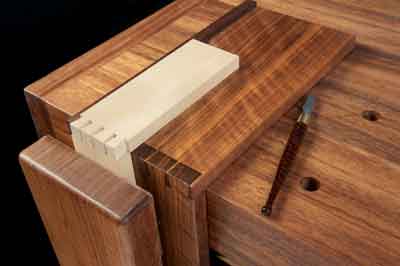
The issue I have with this is that I do not want another appliance to add to the ones I already have. But I like the idea, and wanted to incorporate it.
To cut to the chase, here is my modified Moxon vise ....
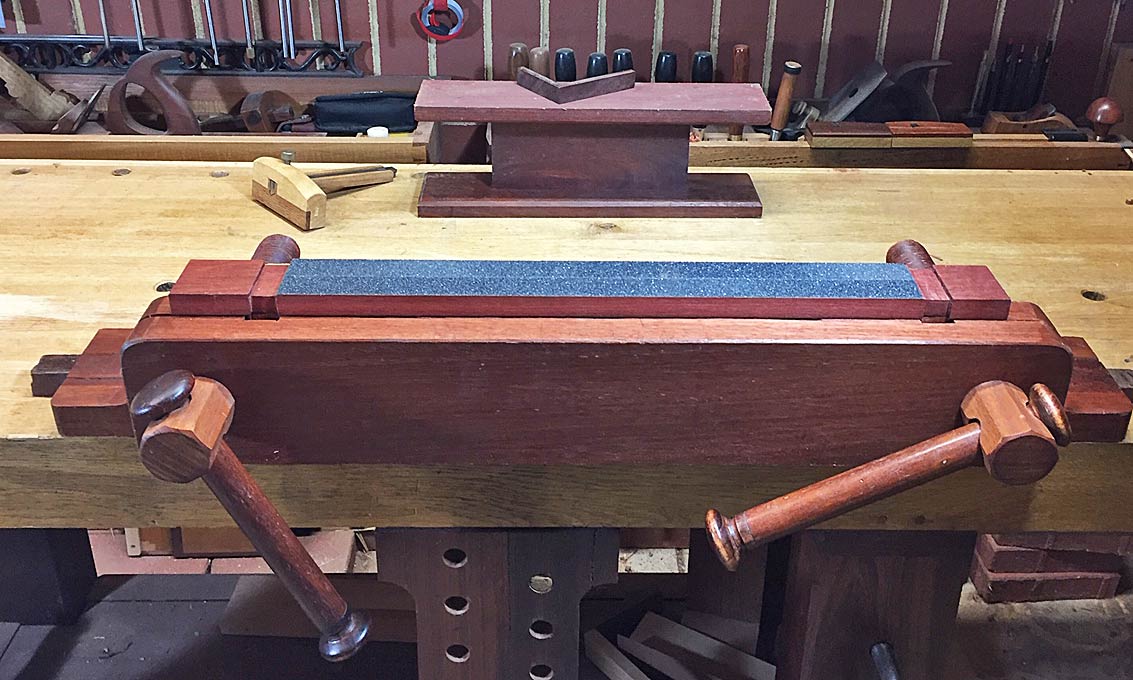
The first item is the ledge at the rear, which is covered in non-slip. The non-slip is for stair treads. The ledge is an idea taken from Joel Moskowitz (Tools for Working Wood), and is intended to use with a clamp when the tail board may need to be clamped. I have used clamps in the past, and so I know it is a good idea.
Where this ledge differs is that it has a raised, hinged section, that places the tail board 16mm above the chop. This was also present on my previous version ...
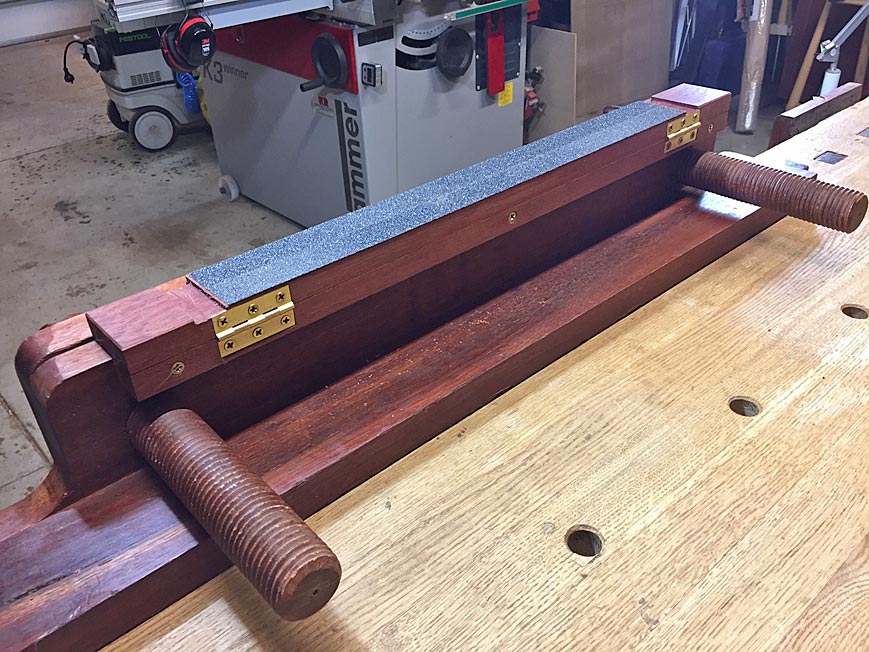
This allows the higher section to be folded out of the way when sawing ...
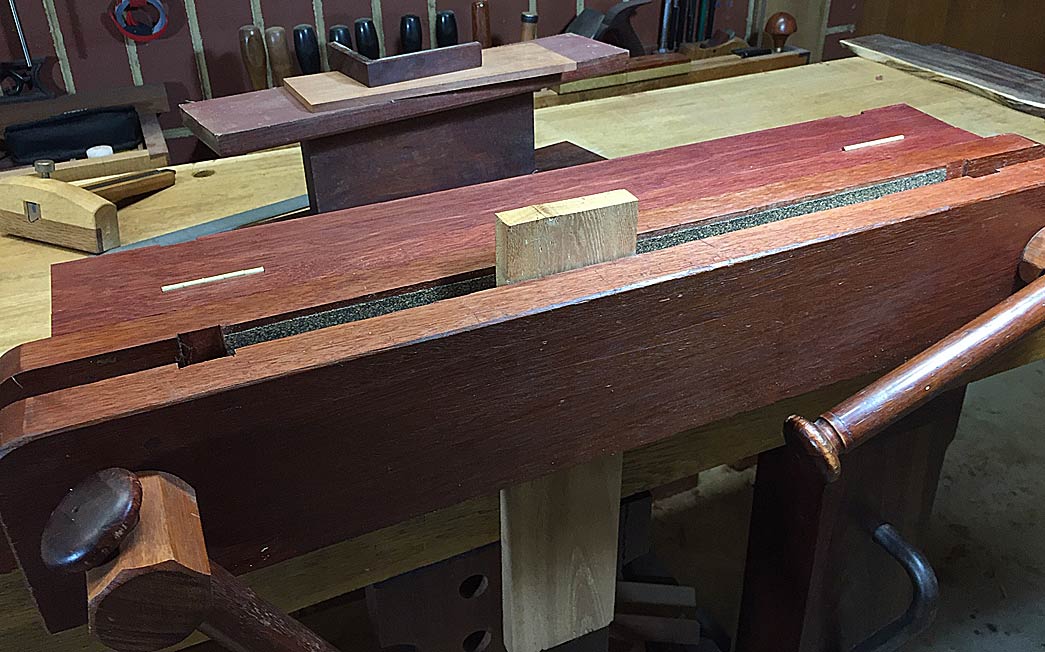
The reason for this is that a coplanar top surface will lead to the chop being marked up by the knife when transferring the tails. This is the reason I recommend that the Moxon vise does not receive a table at the rear. It is why I prefer instead to raise the work piece up higher than the chop, out of harms way. The rear of the board is supported by the "I-beam" (which can be seen in the photos.
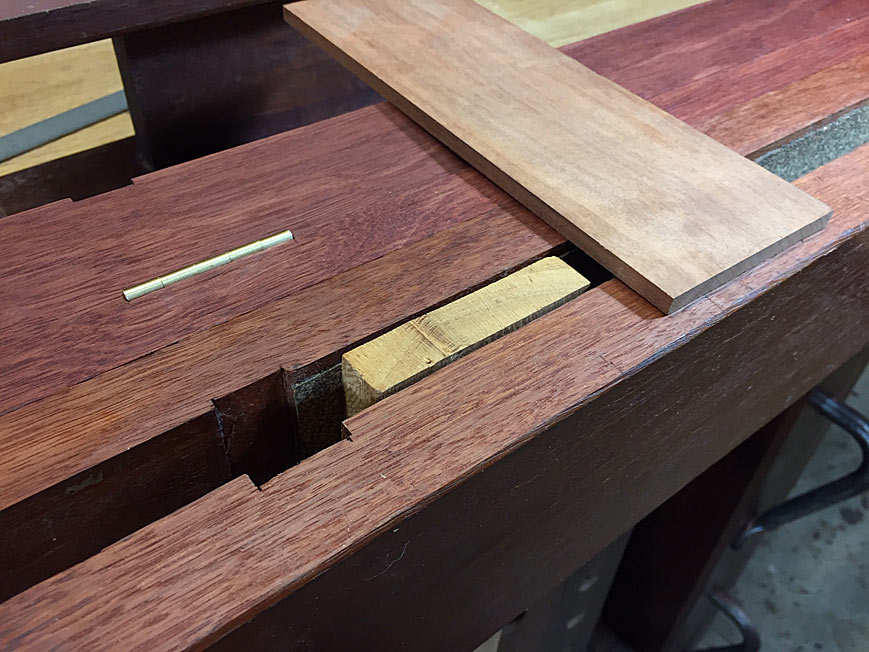
The inside of the chop and the vise face are now covered by a material made from a composite of cork and rubber. BenchCrafted sell this as "crubber". I researched it on the 'Net and purchased a large piece on eBay.
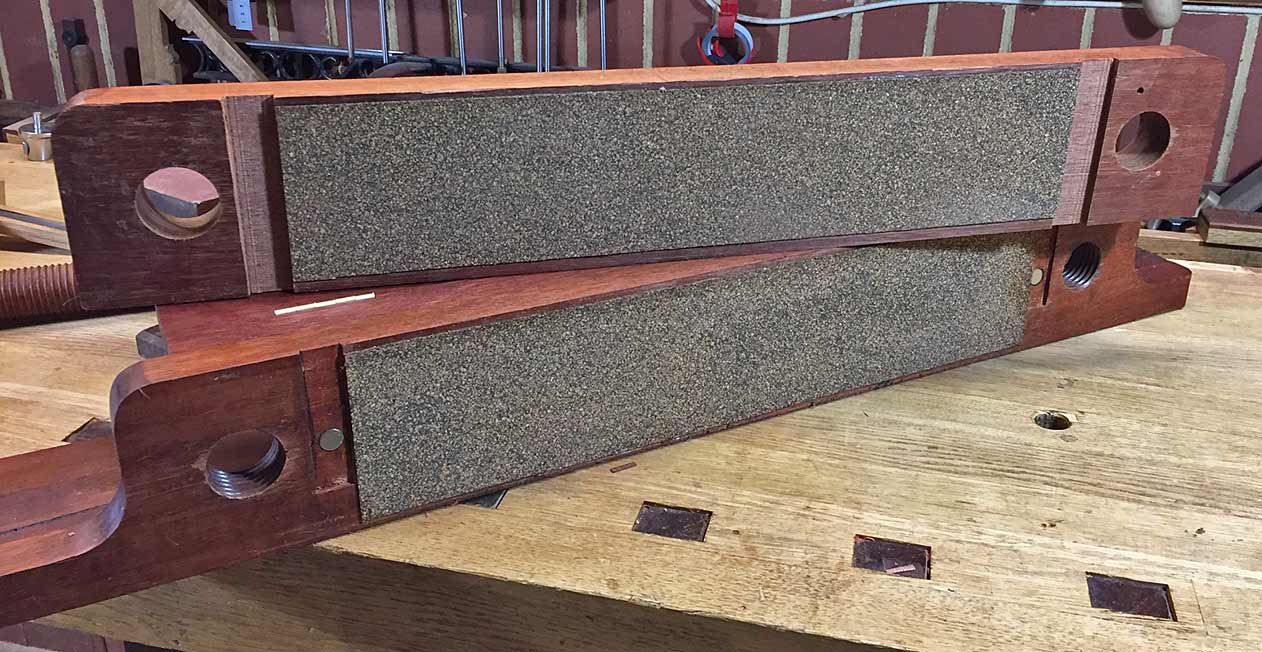
Note above that there are dados in the chop and the face. The dado in the face has a recessed rare earth magnet.
I had an idea to make an integral, but removable alignment fence. This is a steel angle faced with hardwood ...
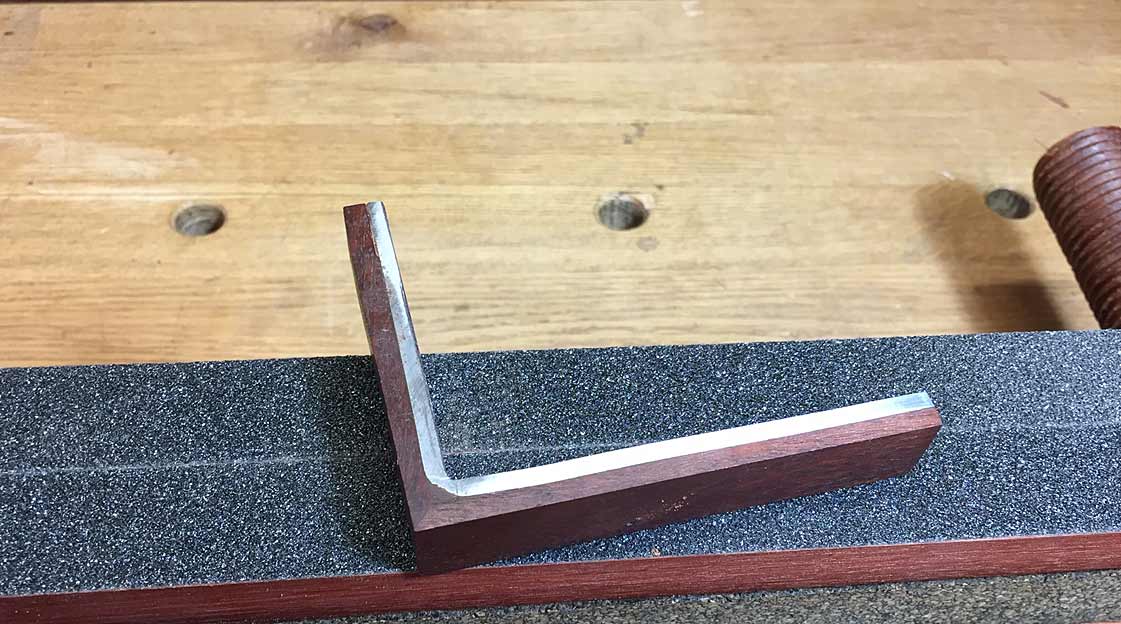
It slots into the dado, and is held firmly ...
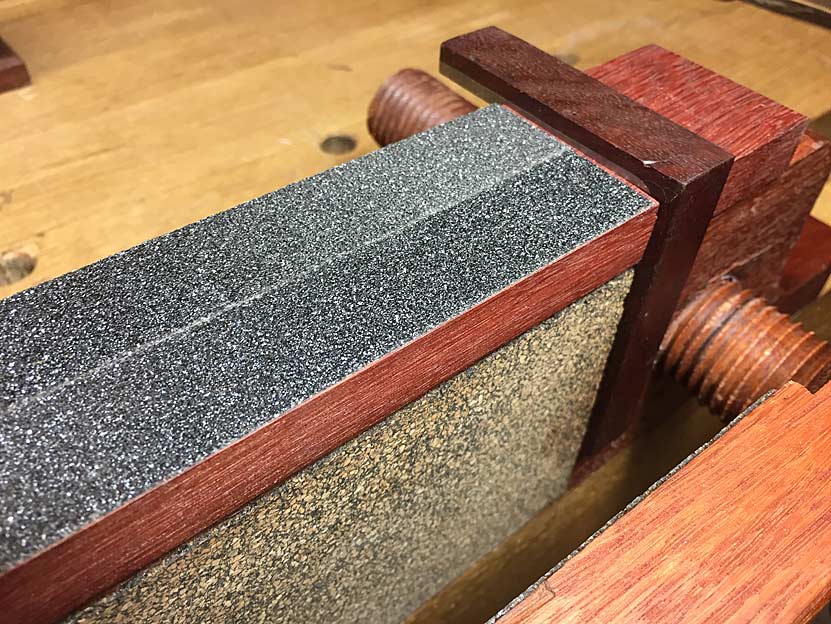
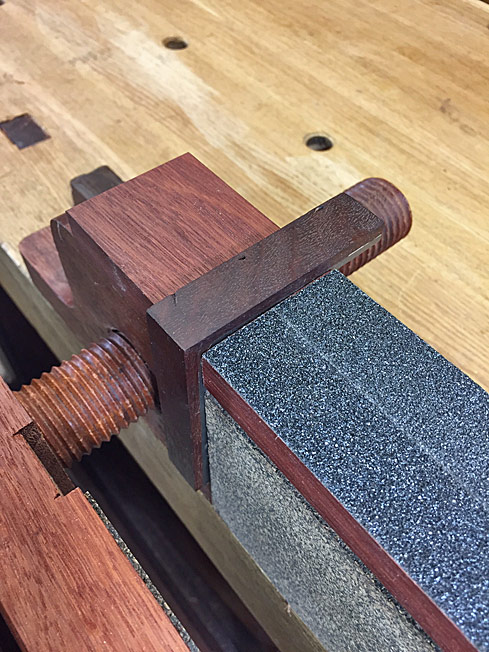
And then is used in the same manner as an alignment board ...
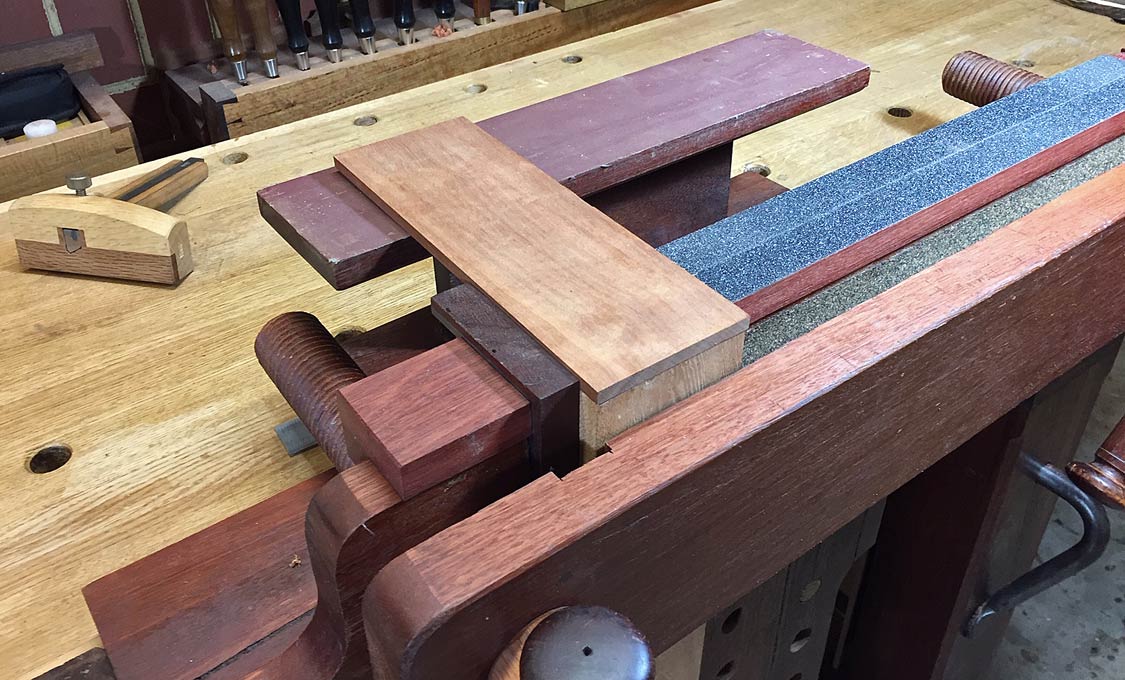
I hope this can be used by others.
Regards from Perth
Derek
It got me thinking about the improvements I'd like to make to my Moxon vise. I have plans to make a new Moxon vise, using steel screws and iron wheels ala BenchCrafted, and all the parts are waiting in my workshop. But they will wait until this build is completed. And so I decided to modify the Moxon vise I have been using for the past 8 years.
The Moxon vise is not simply about holding a board to saw dovetails. It is also about holding two boards together to transfer the tails to the pin board.
In regard to the holding-to-transfer, David Barron designed a useful jig, a dovetail alignment board ...

The issue I have with this is that I do not want another appliance to add to the ones I already have. But I like the idea, and wanted to incorporate it.
To cut to the chase, here is my modified Moxon vise ....

The first item is the ledge at the rear, which is covered in non-slip. The non-slip is for stair treads. The ledge is an idea taken from Joel Moskowitz (Tools for Working Wood), and is intended to use with a clamp when the tail board may need to be clamped. I have used clamps in the past, and so I know it is a good idea.
Where this ledge differs is that it has a raised, hinged section, that places the tail board 16mm above the chop. This was also present on my previous version ...

This allows the higher section to be folded out of the way when sawing ...

The reason for this is that a coplanar top surface will lead to the chop being marked up by the knife when transferring the tails. This is the reason I recommend that the Moxon vise does not receive a table at the rear. It is why I prefer instead to raise the work piece up higher than the chop, out of harms way. The rear of the board is supported by the "I-beam" (which can be seen in the photos.

The inside of the chop and the vise face are now covered by a material made from a composite of cork and rubber. BenchCrafted sell this as "crubber". I researched it on the 'Net and purchased a large piece on eBay.

Note above that there are dados in the chop and the face. The dado in the face has a recessed rare earth magnet.
I had an idea to make an integral, but removable alignment fence. This is a steel angle faced with hardwood ...

It slots into the dado, and is held firmly ...


And then is used in the same manner as an alignment board ...

I hope this can be used by others.
Regards from Perth
Derek



